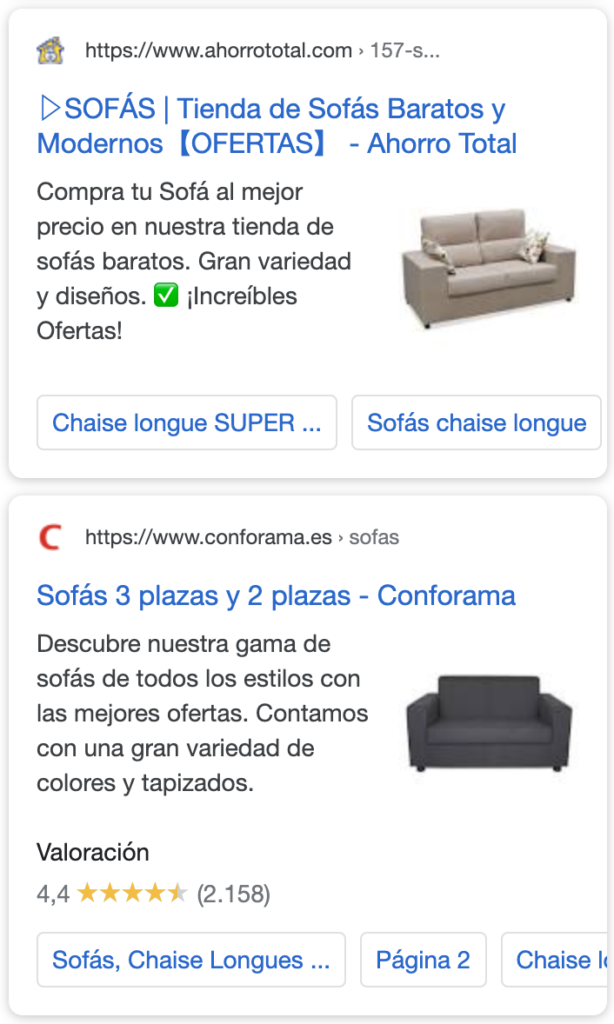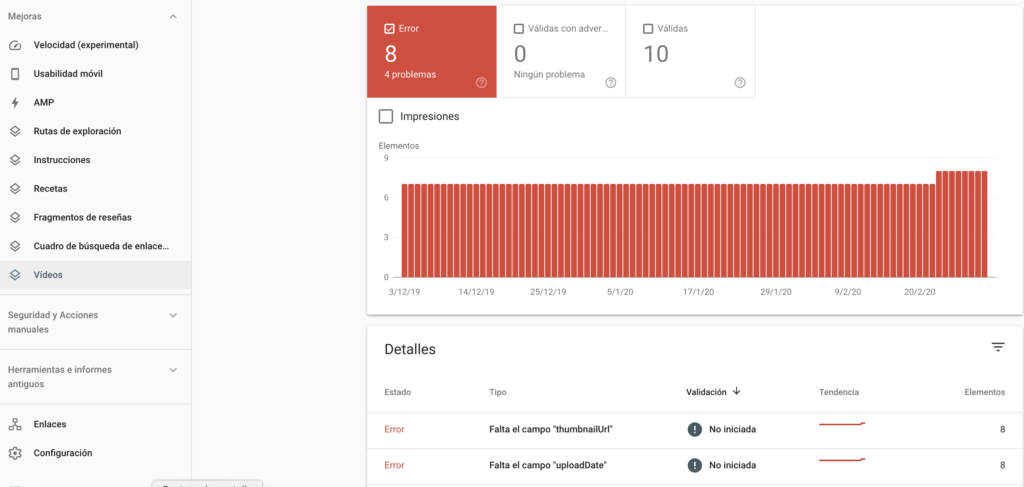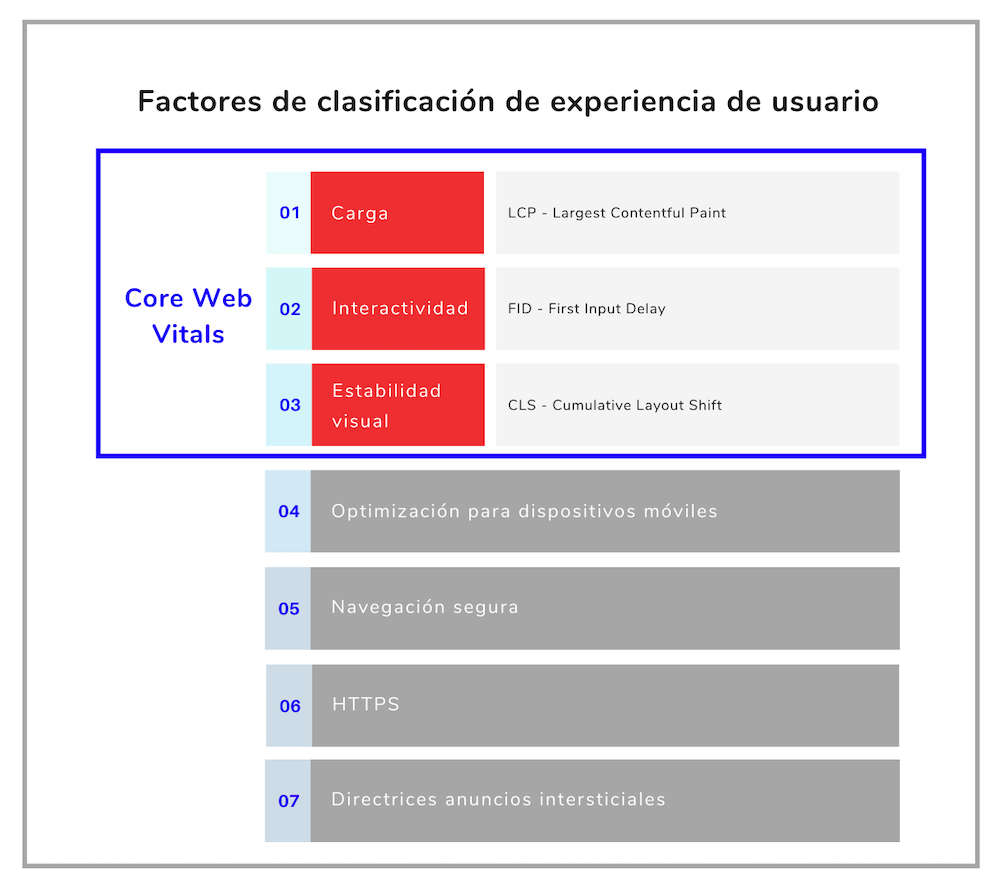Written by Jose Vicente
Índice
Structured data allows us to mark content in an unambiguous way so that search engine robots are able to understand what type of entities make up each page. If our site is an e-commerce site we will have to mark correctly the pages of our products, if our site is a news media we will have to conveniently mark the pages with news, and so on a long list of possible options.
Properly implemented, this should result in the following benefits:
- Encourage adaptation to the relevant enriched results.
- To mitigate in some way that Google may interpret certain content as thin content.
- Incorporate information to the Google Knowledge graph.
Although Google has recognized that the mere fact of implementing structured data does not directly benefit positioning, it does indirectly favor visibility because crawlers will be able to understand our content more precisely. But once we understand our content, we will depend on its quality to rank regardless of whether we have structured data.
Now that we are clear about the possibilities of structured data, halfway between technical SEO and content relevance, let’s see how to work with it.
Where do I start?
This is a question that often arises during the technical phases of a development or SEO optimization project. Developers have documented what structured data is and schema.org where there are over 600 different data types that we don’t have time to review and there is no documentation to justify their use.
So the most reasonable thing to do is to concentrate on a first objective:
What is user experience and what is it for?
The user experience or UX (User Experience) is everything that a person perceives when interacting with a service or product at the time of consumption or when browsing a website, app or system. The objective is that the user has the feeling of being in control and everything is recognizable and intuitive for him.
The main aspects taken into account by the UX are:
- Usability.
- Accessibility.
- Interaction.
- Communication style.
Although the concepts SEO and user experience sometimes seem to be very distant, the truth is that nowadays they could be considered as disciplines that share the same objective and should go hand in hand.
A few years ago websites were ranked almost exclusively on keywords and backlinks. Today, this has changed considerably thanks to the constant updating of Google’s algorithms to ensure that users receive the best possible results.
Every day, more than 4 billion searches are performed on this search engine. From each of these queries, Google extracts a large amount of data that is used to improve its algorithm in order to:
- Provide the most accurate results possible in relation to the user’s search intent.
- To offer the best possible user experience.
- Show quality websites.
To achieve this we cannot focus exclusively on the content of a website, but increasingly we must take into account other factors such as user experience.
Over the last few years, website ranking algorithms have been evolving, giving greater importance to the user experience, which has become an increasingly important factor when evaluating a page. Therefore, having a good user experience will help us in ranking in the SERPs, benefiting organic positioning.
A well-worked SEO will achieve a good position in search engines.attracting users to the website, and good UX development will ensure that the user has a good user experienceThe more visitors are able to navigate easily, find the information they are looking for and, therefore, stay longer on the website, generating a greater opportunity for conversion.
The evolution of classification factors
Sometimes there is a misconception that SEO work only involves including relevant keywords in content, getting external links or improving internal linking.
With what you may come to think:
Content with keywords + title + links = good website ranking.
But this is not the current reality. It is true that these are important points, but as mentioned above, search engines are evolving and consider other factors for ranking websites.
Just as Google updates its algorithms, we professionals in the sector must evolve and adapt to its new requirements, so we must value and work on everything related to user experience.
Since when is user experience important for SEO?
It all started in 2015 with the arrival of RankBrain: Google made it clear that it was betting on user experience and that it would be the third factor to take into account after content and links.
RankBrain is an algorithm based on behavioral metrics. An artificial intelligence system that helps Google to know if the user is “liking” the experience on the website and, to do so, takes into account different metrics: bounce rate, dwell time, page views per session and organic CTR.
As the ranking method has evolved, both Google and other search engines have incorporated elements such as:
Is your website…
- Secure?
- Fast?
- Responsive?
- Easy to navigate?
- Content responding to the user’s search intent?
- Content of sufficient quality to keep the user on the page?
- …
User experience will be a stronger ranking factor in 2021
On Thursday, May 28, 2020 Google announced that the search ranking algorithm was changing, putting a greater focus on the importance of the user experience of web pages.
With this, they have presented an initiative called Core Web Vitals, which are a set of metrics that quantify key aspects of user experience such as usability, load time, content stability as it loads and interactivity.
- Load – Largest Contentful Paint (LCP): this metric measures the load performance of the content. It marks the time when the main content is rendered and therefore available for viewing by the user. For the user experience to be considered good, it is recommended that the LCP be below 2.5 seconds.
- Interactivity – First Input Delay (FID): analyzes and measures the capacity for rapid interactivity, i.e. the time that elapses from the moment the user performs an action on the website until the browser responds to the interaction. To be considered as having a good FID a page must have a FID of less than 100 milliseconds.
- Cumulative Layout Shift (CLS): this metric measures visual stability. It helps quantify the frequency with which users experience unexpected design changes, such as elements of a page shifting as content appears on the screen, which is commonly considered annoying.
This metric does not measure time, in this case it quantifies the magnitude and frequency at which these unexpected design changes occur. To provide a good user experience in this regard, pages should maintain a CLS of less than 0.1
All of these factors are in addition to existing ones such as mobile optimization, secure browsing, HTTPS and intrusive interstitial ad guidelines.
Google’s goal is to increasingly align itself with user expectations, so that users can more easily access the information they are looking for.
To help developers understand how Core Web Vital is going to be measured and to detect and fix bugs in websites, some tools such as Lighthouse and PageSpeed Insights have been updated. Additionally, Google Search Console will provide a data report to help site owners quickly identify opportunities for improvement.
However, in cases where there are several landings with similar quality content, the page with the best user experience will have the highest visibility in the SERP.
According to Google, all these changes will not occur until next year 2021 and will be announced at least 6 months in advance, which gives us designers, developers, SEO and companies to get down to work and start working on all aspects that can improve the user experience of our portals.
If the user experience is a ranking factor for search engines, it is something that we must necessarily take into account when working on a website with the aim of improving its positioning.
” target=”_blank” rel=”noopener noreferrer”>optimizing SERPs
getting to appear in most of the enriched results relevant to our content. Google offers us the search gallery where we can consult which are the current rich features of the SERPs and, filtering by the type of site, it will recommend us which are the essential features that we should work on.

For example, if you have an e-commerce site, you will have to start by working on the Products, FAQ and Feedback functions. Getting them should improve our CTR in the SERPs, since the goal should not be so much to get a good position but to get clicks on every relevant search in which our site appears. And, in many cases, a slightly worse but more eye-catching position can be more conducive to obtaining traffic.
Analyze the competition
Nor should we lose sight of our competence when deciding which structured data to implement or when assessing what level of detail to go into. Tools such as Sistrix or SEMrush can give us clues as to what kind of rich SERP features our competitors are taking advantage of.
But if we do not have this type of tools, we can resort to simple solutions such as the search engine itself. We only have to perform a handful of searches, limiting them to the site: of our competitor’s domain to be able to analyze what kind of solutions they have implemented for each type of content. Once this is done we just need to turn to Google’s Structured Data Testing Tool to check what structured data they are using in each case.

If we want to be more exhaustive and check what structured data our competitors have implemented, we can resort to a crawler such as Screaming Frog. This tool is able to extract what kind of structured data is on each crawled page as well as structured data that is not directly related to the rich results.
Go further
But if we have the possibility we can explore schema.org and mark a greater wealth of content with structured data, beyond the basic ones recommended by the search gallery. Even if they do not provide us with the visibility of the enriched results and we are not sure to what extent they will improve our positioning, it is a practice that in no case will work against us and, hopefully, will give us an extra advantage over our competitors.
By using the Structured Data Testing Tool we will be sure that the schema used is correct, but we will also have to be sure that in the marked-up content we follow Google’s general guidelines for structured data. Especially taking care that the marked contents are correct and visible to the users.
Implementation and testing
Once we are clear about the types of structured data we are interested in for our site, we must check what level of definition we can reach in each case. If we check the Google search gallery documentation we will see that there are generally 3 sections to consider:
- Specific guidelines to structured data or enriched output: in each section we will see a series of criteria that the structured data markup or the page in which it is intended to be included must follow, covering most of the times in which cases it is valid and in which cases it is not. For example, if we want to implement FAQPage, a list of questions and answers should be marked. On the other hand, if the page has only one question asked and answered by different users, we should opt for a QAPage type of markup.
- Implementation of mandatory properties: in order to have options to appear with enriched results we must make sure that we implement the properties that the documentation establishes as mandatory for each type. Therefore, we will have to be sure to provide this information on each of our pages in order to mark them with structured data.
- Implementation of recommended properties: in addition to the mandatory properties, certain functions require additional data. We must complete these properties as much as possible.
In summary, during implementation we must be sure that we comply with the general guidelines, those specific to each enriched result and implement the mandatory properties in order to have options to appear with enriched results. And, whenever we can, complete the recommended properties.
The structured data tool offers us the possibility to test sample pages to detect possible errors in the code and, if we are not yet able to publish them, we have the possibility to copy and paste code. But we must keep in mind that the tests it performs on the content of each of the properties are very basic, so this will need a more thorough review.
What if I do not comply with the guidelines?
The answer to this question depends very much on the type of guideline we are in breach of. For example, the guidelines for the carousel functionality state that the carousel can appear when structured data of type recipe, course, article, restaurant and movie are marked. If we mark with ItemList any other type of structured data the carousel will not be displayed, but we will not be in breach of any requirement that may result in a penalty.
But there are other types of requirements that, if not met, can result in a manual penalty for structured data problems. A very clear example would be when structured data does not correspond to the content of the page, or content that is hidden from the user has been marked with structured data. In these cases, Google understands that we are trying to cheat their algorithms and this is seen with bad eyes.
Implementation follow-up
Once the implementation of the structured data has been published and the correctness of the data has been ensured, the SEO work is not over. It is necessary to keep track of the documentation and keep up to date with changes that occur periodically, some of which may include:
- New functionalities in the SERPs: in recent years Google is making changes to the search results almost constantly. Among these changes there are functionalities that may be interesting for our site and for which, in some cases, it will be necessary to adapt the implementation of structured data.
- Changes in structured data: even if there are no changes in the SERPs, Google may change the guidelines or mandatory properties and render our implementation obsolete. In these cases, it would be necessary to update it.
- New recommended properties in structured data: in some types of structured data we are seeing how Google is increasing the number of recommended properties. It usually goes hand in hand with an increase in rich result functionalities.
- New structured data in schema.org: the number of schema is constantly increasing and we can usually check which ones are being worked on at https://pending.schema.org/. It is advisable to periodically check if any relevant type is being worked on for our site and follow up on them until they become a definitive part of schema.org.
Review of errors
Google Search Console offers us the opportunity to detect errors in part of the structured data implementation. In the Enhancements section of its menu we will have available the types of enriched fragments detected by the tool and within each one we will be able to consult the Coverage. URLs are classified in 3 different ways depending on their severity:
- Error: structured data have critical errors that prevent rich snippets from being displayed. It is important to solve them as soon as possible.
- Valid with warnings: the structured data on these pages are missing fields that are not required. Rich snippets can be displayed for these pages but will lack certain functionalities due to the lack of these fields.
- Valid: the enriched results have no errors, all required and optional fields have been filled in and are valid.
Although with tools such as Sistrix and SEMrush we can assess for which terms we are getting rich results, Google Search Console gives us an added value by showing us which pages have problems and therefore may not be getting them. The lack of one of the mandatory fields in a structured data can prevent us from obtaining enriched results for a large number of searches and thus obtain less visibility for all of them, so it is essential to periodically review each of the error details of each type of improvement. As they are fixed, we will be able to request validation of the error by Google and get feedback on the result.

In conclusion, when working with structured data we should start by focusing our efforts on the structured data related to the SERPs functionalities that can give more visibility to our site, making an implementation as complete as possible but without breaching the guidelines established by the search engines. Finally, we must carry out a periodic follow-up of possible errors that could invalidate the work done.




